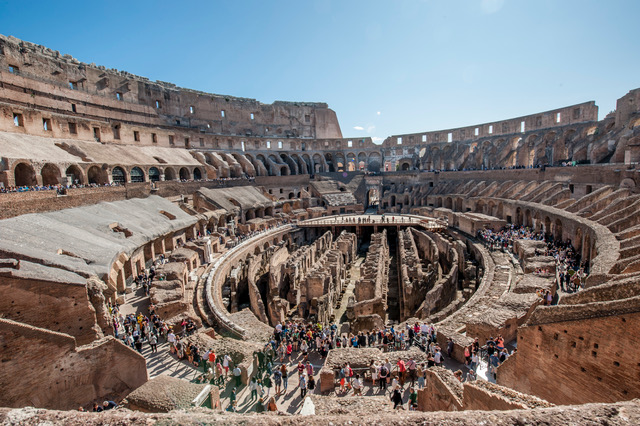Top 5 Reasons to Explore Rome Just Now
Now is the perfect time to plan a trip to Rome. From history, art, archeology, and architecture to winding, cobbled alleys filled with hidden gems, the eternal city has something for everyone.
Here are our top 5 reasons to put Rome on your must-visit list:
1. Rome is Open Again
After the recent closures because of the pandemic, Rome is reopening and welcoming visitors again. Popular sights such as the Colosseum, the Roman Forum, the Palatine Hill, Vatican Museums, St Peter’s Basilica, the Pantheon and many more museums reopened on February 1st.
Visitors can explore these sights without the usual busy crowds or intense summer heat. Moderate temperatures, bright blue skies, and sunshine make it pleasurable to explore the city.
2. Outdoor Spaces to Explore on Foot, by Scooter or River Boat
Rome is one of the European capital cities with the largest area of green space. The Italian aristocracy built several impressive villas with landscaped gardens, many such as Villa Doria Pamphili, Villa Ada, and Villa Borghese are open to the public.
Rome has the River Tiber, one of the longest rivers in Italy, flowing through the city. Why not experience the sights of Rome from a unique perspective, from a boat trip along the Tiber. You can hop on and off at one of the many bridges along the way. Jump off at Ponte Sant’Angelo and visit Castel Sant’Angelo before heading to the Vatican Museums and Saint Peter’s Basilica.
Or view the city from an electric scooter. This seems to be one of the most popular ways to visit Rome right now.
3. Seven Hills and Magnificent Views
Founded on seven hills, the Aventine, Caelian, Capitoline, Esquiline, Palatine, Quirinal Hill, and Viminal, all these locations and other special viewpoints provide spectacular views of the city. Everyone should watch the sun setting over the city’s rooftops and experience the Roman skyline at dusk.
Want to see something unique? Visit the Orange Gardens on the Aventine Hill for a special view of Saint Peter’s Basilica. Perfectly framed through the keyhole at the Knights of Malta property, it is well worth peeking through this famous keyhole.
4. Explore Ancient Roman Ruins al Fresco
Many monuments are accessible outside and are within easy walking distance of each other. When you visit the Colosseum, imagine what it would have been like to sit among the crowds as gladiators fought. Then walk in the footsteps of the Romans through the ruins of the Forum and Palatine Hill and discover the religious, social, and political center of the Ancient city.
5. Delicious Traditional Roman Cuisine
With some restaurants and bars opening again, visitors can savor traditional Roman cuisine such as spaghetti alla carbonara (bacon pieces, eggs, and pecorino cheese) or bucatini all’amatriciana (tomato, bacon, and pecorino cheese) or try the abbacchio alla cacciatora (lamb, garlic, sage, anchovies, and rosemary) or saltimbocca all Romana (veal with ham and sage). A tiramisu or ice-cream will complete any meal.
If you would like to experience Rome from a local’s perspective or would like to know what life was like in ancient Roman times, a guided tour may be the answer. Check out our website for information about our small group or private tours of the Colosseum, the Vatican, Vatican Museums, walking tours of Ancient Rome or food tours. Our experienced tour guides love sharing their knowledge and look forward to welcoming you to Rome.












































 most out of your visit. This week we are wandering through the charming streets of Trastevere, one of Rome’s most interesting districts.
most out of your visit. This week we are wandering through the charming streets of Trastevere, one of Rome’s most interesting districts. 









 strict in Rome
strict in Rome












